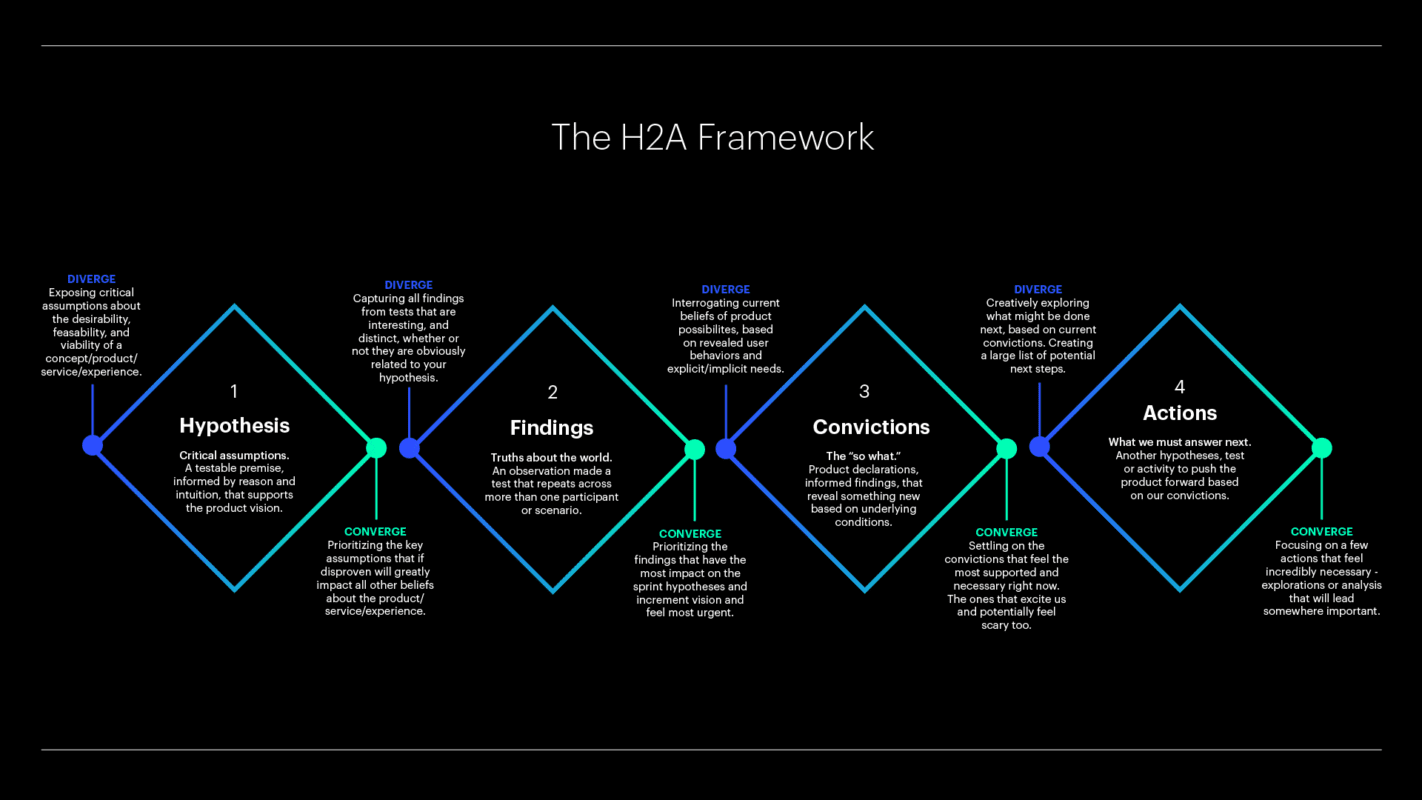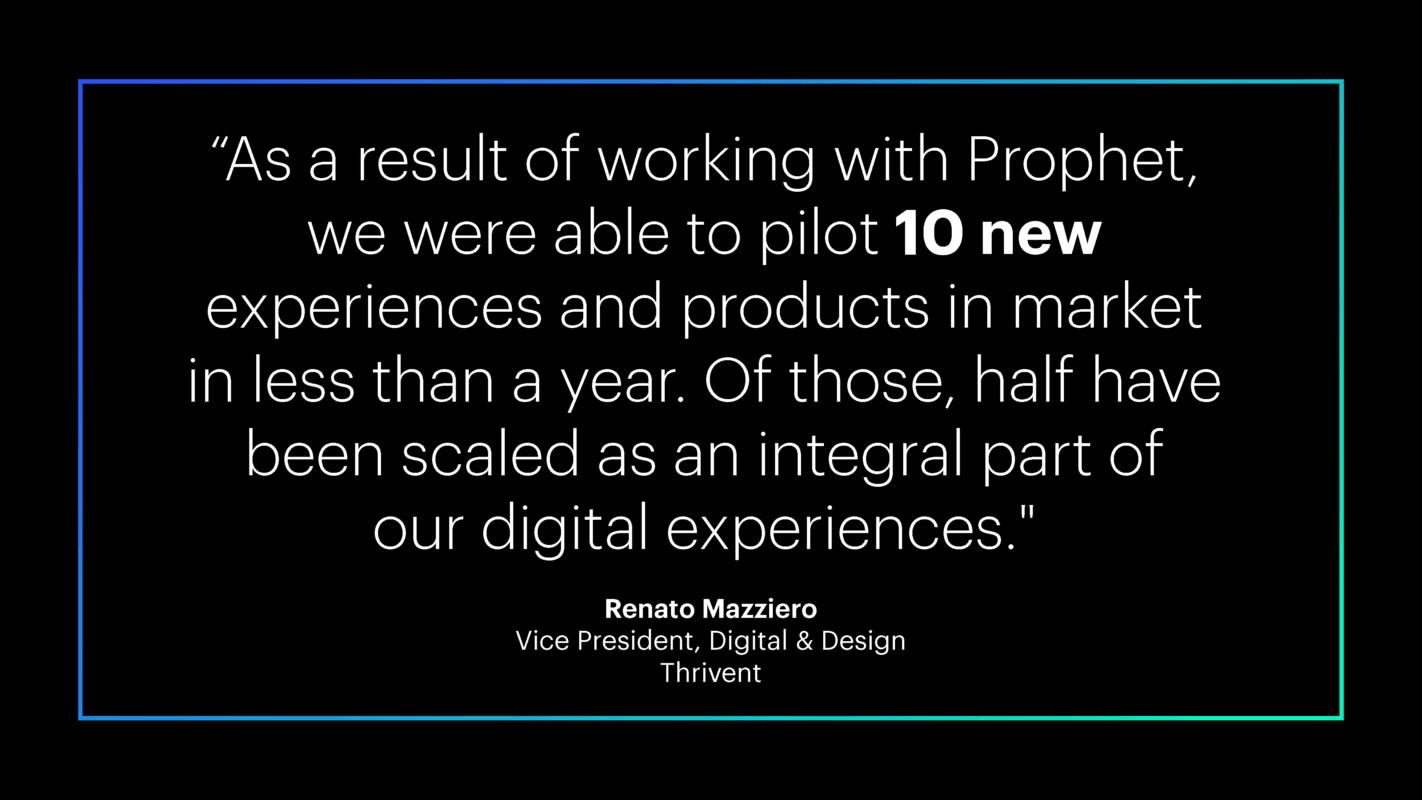BLOG
Four Steps to Optimize Digital Product Creation
Whether you’re a B2B, B2C or DTC company, Prophet’s proprietary hypotheses-led approach to innovation takes product concepts from 0-1 efficiently and successfully.
Necessity is the mother of invention as they say. And many successful companies and products were started in times of an economic downturn, from the inception of Netflix in 1997 (now valued close to $100B) to that of Airbnb in 2008 when the Great Recession saw demand for short-term, low-commitment housing increase exponentially. However, when the stakes are high, the reality often is that the bets are fewer, there is less room for error and the need for more certainty of success goes up. You can’t simply take the old corporate RND approach to “Spray and Pray”, that one of your concepts will be market driving.
Oftentimes, businesses will have identified a new opportunity area, market, audience or digital channel that looks potentially valuable for their growth. However, they are not at the point of concept definition and design to immediately hand it to internal development and product teams to begin to build. While they will have a concept of what they think would be valuable for customers, many businesses lack the evidence and detail of where they should invest first, what they should (or more importantly shouldn’t) build and in what order to deliver customer and business value quickly.
Across all industries, B2B/B2C/B2B2C/DTC, and phases of company maturity, Prophet’s proprietary “Hypothesis to Action” (H2A) approach enables us to take product concepts from 0-1 successfully. It helps get from idea to minimum viable product (MVP) in the most efficient way possible; cutting through ambiguity and defining where to start at the minimum possible investment, with a clear direction of what is going to build traction in the market, reduce risk and increase the likelihood of a successful digital product that meets the true needs of customers.
The H2A Model

Leveraging our own learnings from decades of successfully shipping net-new products, we have optimized the most successful product creation engine of the past 15 years in the approach of Silicon Valley venture capital. The H2A model was created from years of work and insight and aims to provide cross-functional teams with a minimal structure to make better-informed digital product decisions and enhance design progress. It is comprised of four key stages: Hypotheses, Findings, Conviction and Actions – and in many instances we have executed the entire H2A process within two weeks.
In one instance, a financial services client came to us with the desire to improve lead generation among prospective customers; the company had impressive loyalty among existing customers but struggled to attract net new to the business. Thus, formed the idea for a digital product, “a predictive profiler,” through which the business could predict and offer a tailored product mix and accompanying advice to its prospective customers based on user-provided information. With the problem-to-solve and initial idea in place, we were ready to begin cycles of H2A to take this idea from a concept on a page, to a user-validated, defined and designed MVP.
Let’s take a closer look at each of the H2A stages in turn as we put it into practice with Thrivent.
1. Generate Hypotheses
Hypotheses are critical assumptions you are making about your product or idea, articulated as a testable premise. Most often, the riskiest assumption you are betting on at the start of product innovation is simply that your idea is in fact solving a problem or addressing the needs of your target user.
Taking the example of the financial services company, we were assuming that prospects would be more likely to convert if guided to the right product mix and provided tailored advice. We took that overarching assumption and broke it into more specific hypotheses to answer specific questions, starting with what is the right “way in” to lead prospects to a recommended set of products. Our hypothesis: Rather than answering generic questions, users will prefer to self-select into different archetypes, then answer more specific questions to achieve greater levels of personalized results. We quickly designed a lightweight test to prove this, balanced by business ambitions.
2. Extract Findings
After rapidly testing the hypotheses in real-world situations, often sourcing feedback from real customers or users, we build an evidence-filled set of findings. These findings are observed truths made in a test that repeats across more than one participant or scenario.
In our example, we found that we were, in fact, correct. Presented with four different potential “ways in” to kick off the user flow, the majority of prospects preferred to self-select into an archetype group, then answer more specific follow-up questions to deliver tailored results, citing a desirable balance of entertainment (perusing the archetypes) with the rigor of analysis of more targeted questions. Luckily, this user-led finding coincided nicely with the business ambitions of strong data collection (questions) with minimal PII risk (leading to self-selection).
3. Form Convictions
Our findings are swiftly synthesized into convictions that form the basis of the new product. These convictions are the “so what” – product declarations, informed by findings, that become product decisions to be taken forward into design.
Because user feedback conveniently converged with business needs, convictions for this H2A cycle for our financial services client were clear: the optimal “way in”, from both a user experience and business POV, is to lead with archetypes followed by questions to inform the product mix recommendation.
4. Determine Actions
All of this comes together to form the specific actions to move the team forward in designing and defining the user value proposition.
With our client, in closing out this cycle of H2A, we determined that the next best action for the predictive financial services product was to play out a complete interaction model across archetypes and questions, exploring means to delight the user with feedback/findings along the way to encourage completion of the full experience.
We repeated the H2A cycle across a series of six two-week sprints, through which we tested, learned, adjusted, and optimized the product until we reached a fully defined and designed MVP, backed by user data and aligned to business priorities, ready to enter development. Ultimately, when launched in the market, the product achieved 12X the conversion rate of previous lead gen campaigns within the business, evidencing the power and speed of hypotheses-led innovation in driving high-impact products at the minimum possible investment.

The H2A approach has led to the successful launch of B2C, B2B and B2B2C products and services in everything from home goods to healthcare. At its core, the value lies in its ability to find a way to start small, learn quickly and launch successfully. By unearthing the riskiest early assumptions that might be being made – and proving or disproving those rapidly with data-driven evidence – when the product does go live its chances for success will be that much greater and the path to scalability that much clearer.
FINAL THOUGHTS
When resources are limited and risk tolerance is low, you need to move at pace through evidence-led decisions to get to market quickly. Product market fit is never guaranteed, but our methodical approach continues to drive customer and business success regardless of industry.

